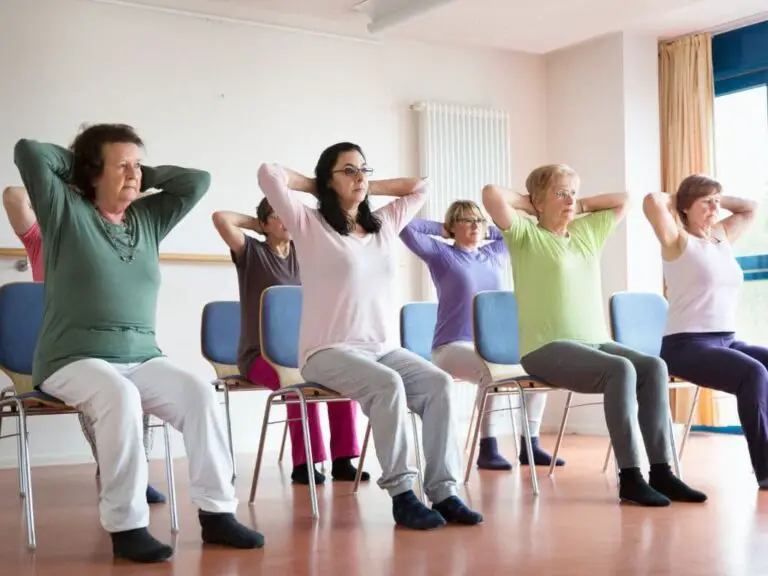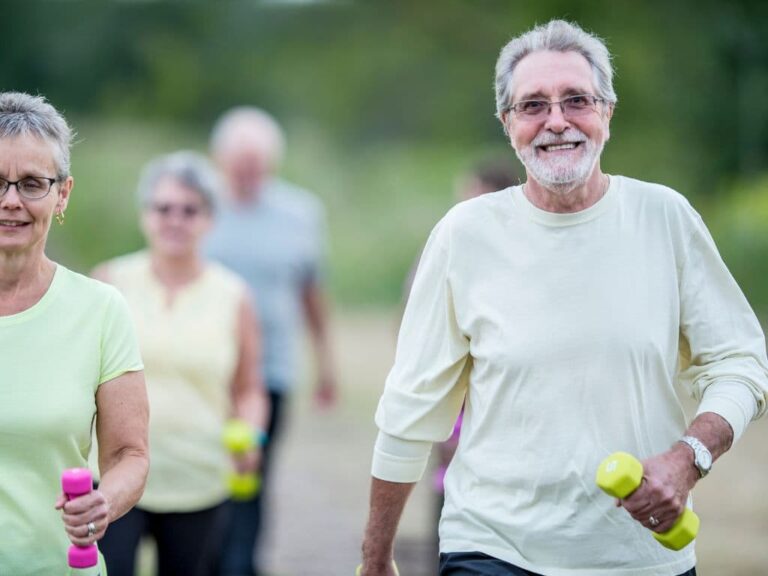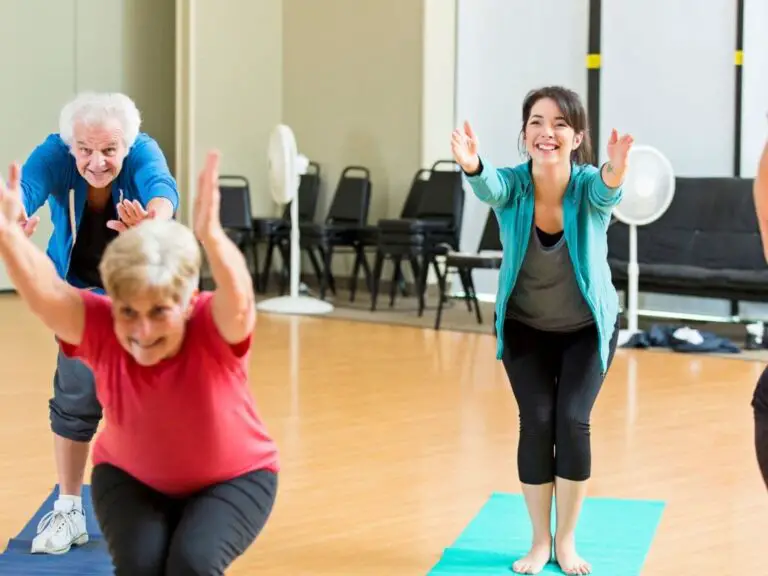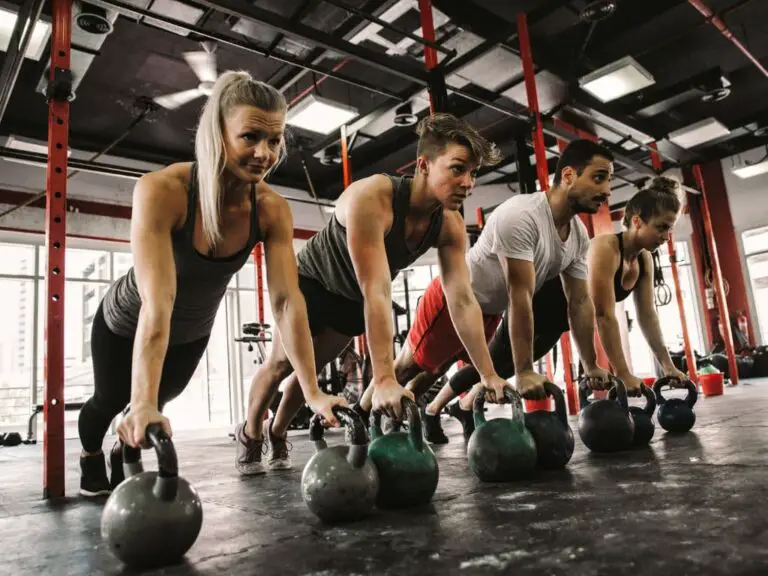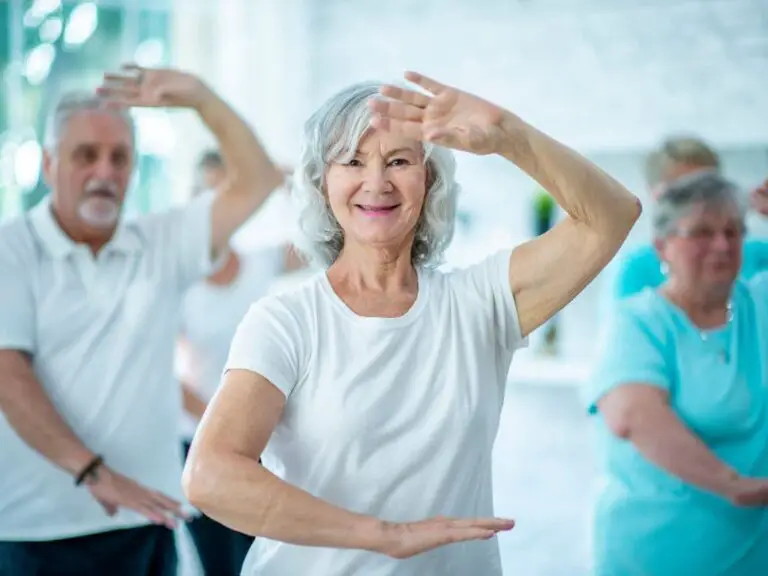Is TRX Training Good for Seniors?
TRX (Total Resistance eXercises) suspension training is a form of functional bodyweight training that uses straps suspended from an anchor point. TRX training engages the core muscles to stabilize the body during dynamic movements.
For seniors, TRX can provide balance, strength, flexibility, and mobility benefits with proper modifications and precautions.
TRX Suspension Training is feasible and beneficial for seniors, according to a study published in the Journal of Functional Aging in 2015. The study found that participants reported improvements in strength, balance, and flexibility, and a positive effect on overall well-being after 12 weeks of training. However, supervision and proper form are essential to prevent discomfort or injury.

What are the Benefits of TRX Training for Seniors?
The TRX (Total Resistance exercises) system employs the use of suspended straps and controlled movements, emphasizing core stability. It is particularly beneficial for seniors due to its focus on functional movements that mimic daily activities.
There are several benefits of TRX Training for seniors highlighted in research:
- Strength Improvements: TRX training is shown to lead to notable strength gains among seniors. This is due to the user’s ability to adjust the level of difficulty and resistance in each exercise by altering body position and the angle of the suspension trainer.
- Balance Enhancements: As TRX training requires the activation of core muscles, it can lead to improved balance skills among seniors. The system assists users in conducting three-dimensional exercises that require neuromuscular coordination, strengthening the core muscles, and providing optimal load transmission, which can also pave the way for better balance and stability.
- Greater Flexibility: TRX exercises incorporate movements that can increase overall flexibility when practiced regularly.
- Gait Improvements: Participants of TRX training have reported improvements in their gait, an essential factor in seniors’ mobility and independence.
- Improvements in Functional Performance: Since TRX training mimics the movements used in daily activities, it can be an effective way to enhance the functionality and performance of seniors in those activities. It is essentially aimed at improving the abilities like chair rising or stair climbing.
- Reduced Pain: For some seniors, regular TRX training may even help in managing or reducing pain levels. Notably, supervision is essential to ensure proper muscle activation and correct posture during the exercises, reducing the chance of injury.
How Does Suspension Training Improve Balance and Fall Prevention?
- TRX exercises train core muscles to improve trunk stability, coordination, and balance.
- Dynamic TRX movements challenge balance and mimic real-life motions needed for fall prevention.
- One study found TRX training improved balance in older adults with knee osteoarthritis.
Can TRX Training Enhance Strength and Flexibility in Older Adults?
- TRX allows progressive resistance by changing body position and provides a strength stimulus.
- In a 12-week study, older adults reported significant subjective strength gains from TRX training.
- TRX facilitates a full range of motion to increase flexibility, especially in the shoulders and hips.
How Does TRX Training Contribute to Mobility and Functional Fitness?
- TRX targets total body fitness with exercises that train upper, lower, and core muscles.
- TRX movements like squats and lunges improve mobility for daily activities like stair climbing.
- In studies, older adults showed improved sit-to-stand ability after functional training like TRX.
What are the Risks of TRX Training for Seniors?
While TRX has been found to be generally feasible and beneficial for healthy older adults, with potentially positive effects on strength, balance, and functional mobility, there are some risks and considerations associated with the program.
Potential risks include the emergence or exacerbation of pain, particularly in the knees, hip, or thoracic spine. This has been reported by some participants during specific exercises, which may be due to pre-existing injuries or joint damage, inadequate core activation, or improper spine position during the exercises. Careful supervision and instruction, as well as the use of alternative exercises, can help mitigate these risks.
Another challenge is the need for a small group size for beginners to ensure proper supervision, feedback, and correction of exercise execution. This is more resource-intensive and may limit the scalability of the program.
As with any fitness program for older adults, the individual’s health status, physical abilities, and exercise experiences should be considered. TRX-OldAge should be adapted individually to each participant’s precondition, demands, and preferences. It is essential to obtain medical clearance prior to starting the program and to continuously monitor the participants for any adverse reactions.
Are There Any Specific Health Concerns for Seniors Practicing TRX Training?
- Seniors should get medical clearance, especially those with chronic conditions like osteoarthritis.
- TRX requires coordination, which may be difficult for seniors with neurological conditions like Parkinson’s.
- Older adults may be at higher risk for musculoskeletal injuries with improper TRX technique.
How Can Seniors Minimize the Risks Associated with TRX Training?
- Start with beginner TRX exercises before progressing to avoid overexertion injuries.
- Use TRX modifications like support handles to reduce load on problematic joints.
- Ensure proper supervision to teach safe exercise form and prevent excessive joint strain.
- Consult a physical therapist to identify any exercise restrictions for pre-existing injuries.
How Should Seniors Modify TRX Exercises to Make Them Safe and Effective?
TRX workouts can be adapted for seniors’ needs and fitness levels:
What Are Some Beginner TRX Exercises for Seniors?
- TRX Rows: Work back/shoulders with feet on floor for support.
- TRX Assisted Squats: Hold handles for balance doing partial squats.
- Standing TRX Marches: Improve coordination marching with strap support.
What Are Some Advanced TRX Exercises for Seniors?
- TRX Lunges: Challenge balance and strength with lunging motions.
- TRX Push-ups: Build upper body strength with handles for assistance.
- TRX Mountain Climbers: Increase core and leg strength while watching form.
How Often Should Seniors Do TRX Training?
What is the Recommended Frequency for TRX Training to Maintain Health and Wellness?
- For general fitness, 2-3 TRX sessions per week is recommended for seniors.
- Allow at least 1 day of rest between TRX workouts to support muscle recovery.
- Beginners should start with 1-2 sessions per week and gradually increase frequency.
- Limit TRX sessions to 30-45 minutes to avoid fatigue and improper form.
What are Some Other Exercises That Are Good for Seniors?
Complementary training is key for a balanced senior fitness program:
How Can Bodyweight Training Complement TRX Training for Seniors?
- Bodyweight moves like planks, crunches, and chair squats build additional core strength.
- Tai chi and yoga help seniors improve balance, coordination, and range of motion.
What Role Does Functional Training Play in Senior Fitness?
- Functional exercises like side leg raises and heel/toe walking target mobility for daily tasks.
- Low-impact cardio like swimming, cycling, and walking provides cardiovascular benefits.
What are Some Tips for Staying Safe While Doing TRX Training?
Safety guidelines can help seniors prevent injury with TRX:
How Can Seniors Ensure Proper Technique and Form in TRX Exercises?
- Start with low resistance by keeping feet closer to anchor point.
- Maintain core bracing and neutral spine alignment during movements.
- Progress slowly through exercise stages focusing on quality over quantity.
- Avoid locking out joints and use a full range of motion.
What Are the Key Considerations for Joint Health and Muscle Mass Maintenance in TRX Training?
- Consult a doctor before starting TRX training, especially with prior injuries.
- Warm up joints thoroughly and monitor pain levels during workouts.
- Use ice or heat after training to prevent excessive muscle soreness.
- Ensure adequate protein intake to support muscle recovery and rebuild muscle mass lost with aging.
TRX suspension training can be a fun, challenging workout for seniors if properly progressed and complemented by other exercise. Consulting fitness professionals helps older adults perform TRX safely and effectively. With appropriate precautions, TRX training is an excellent option to maintain strength, mobility, and independence with age.
Frequently Asked Questions
-
Is TRX training good for seniors?
Christian Thompson, University of San Francisco researcher concluded that TRX Suspension Training is an effective, safe and fun exercise option for older adults at high risk of falling.
-
What is the best low impact exercise?
Swimming is the best joint-friendly activity. It’s low impact and still burns calories. Swimming is a great way to reduce stress and support your weight. However, it doesn’t make swimming a boring workout. It incorporates strength, flexibility, cardio, strength and cardiovascular training.
-
What is an example of a low impact workout?
Step machine or elliptical trainer. This machine simulates running and jogging while walking up steps. The majority of machines have footholds that are suspended from the ground and allow the feet to glide upwards and downwards, so they don’t touch any hard surfaces during exercise.
-
What walking 3 miles a day will do?
Aiming to burn 300 calories per day, three miles per day is a good pace. If you are overweight, you will burn more calories. However, if your weight is less than 150 pounds you’ll lose more calories. A mile of walking averages 100 calories. A pound is 3,500 calories. If you run three miles per day, one pound will be lost in twelve days.
-
Which exercise will burn the least amount of calories?
Yoga can help you improve your flexibility, increase muscle strength, tone your body, and calm your mind. Except for Vinyasa flow or Bikram yoga, it is low-intensity and does not burn calories.
-
Is TRX good for beginners?
TRX Low Row is one way to help clients learn proper form. It targets traps and lats as well as rhomboidsmuscles which are more advanced, even for beginners.
-
Is walking 30 minutes a day enough exercise?
Walking can be a wonderful way to maintain or improve your health. Walking for 30 minutes a day is enough to increase your cardiovascular fitness, strength bones, decrease excess body fat and improve muscle endurance.
-
Can I do low impact exercise everyday?
Low-impact exercises can be of low, medium or high intensity. CDC recommends at least 150 minutes of moderate-intensity aerobic activity each week as well as muscle-strengthening, flexibility and balance exercises. Low-impact exercises can have just as many benefits as those with high impact.
-
Is walking considered low impact exercise?
Walking, stepping and walking with low impact are movements that do not cause your feet to pound against the floor. You can dance in any direction. Ballet is high-impact, but reggaeton dancing can have a low impact. Zumba, and other fitness classes offer both low-impact and high-impact options.
-
What are the 3 basic exercise program you must know explain?
Three components are essential to a complete exercise and fitness program: Strength, Flexibility and Endurance. These components each have specific guidelines that govern their effectiveness.

